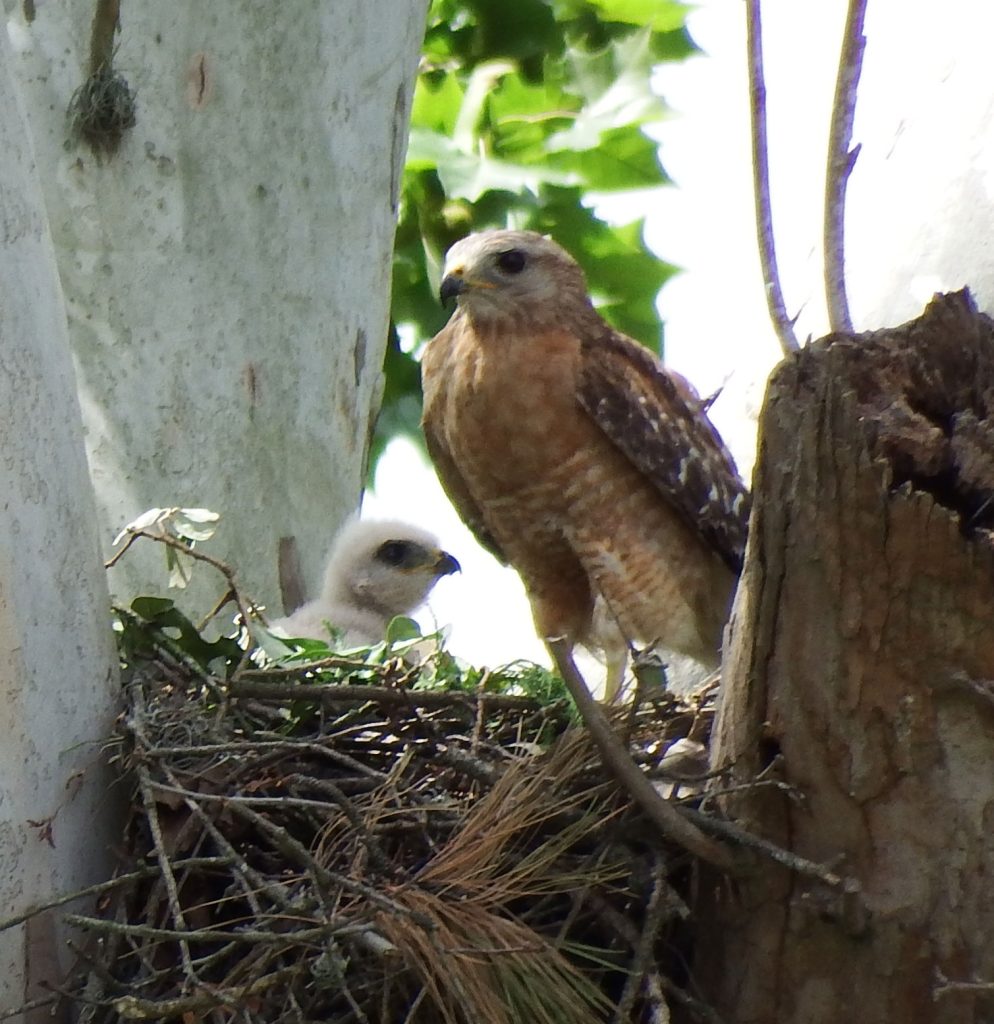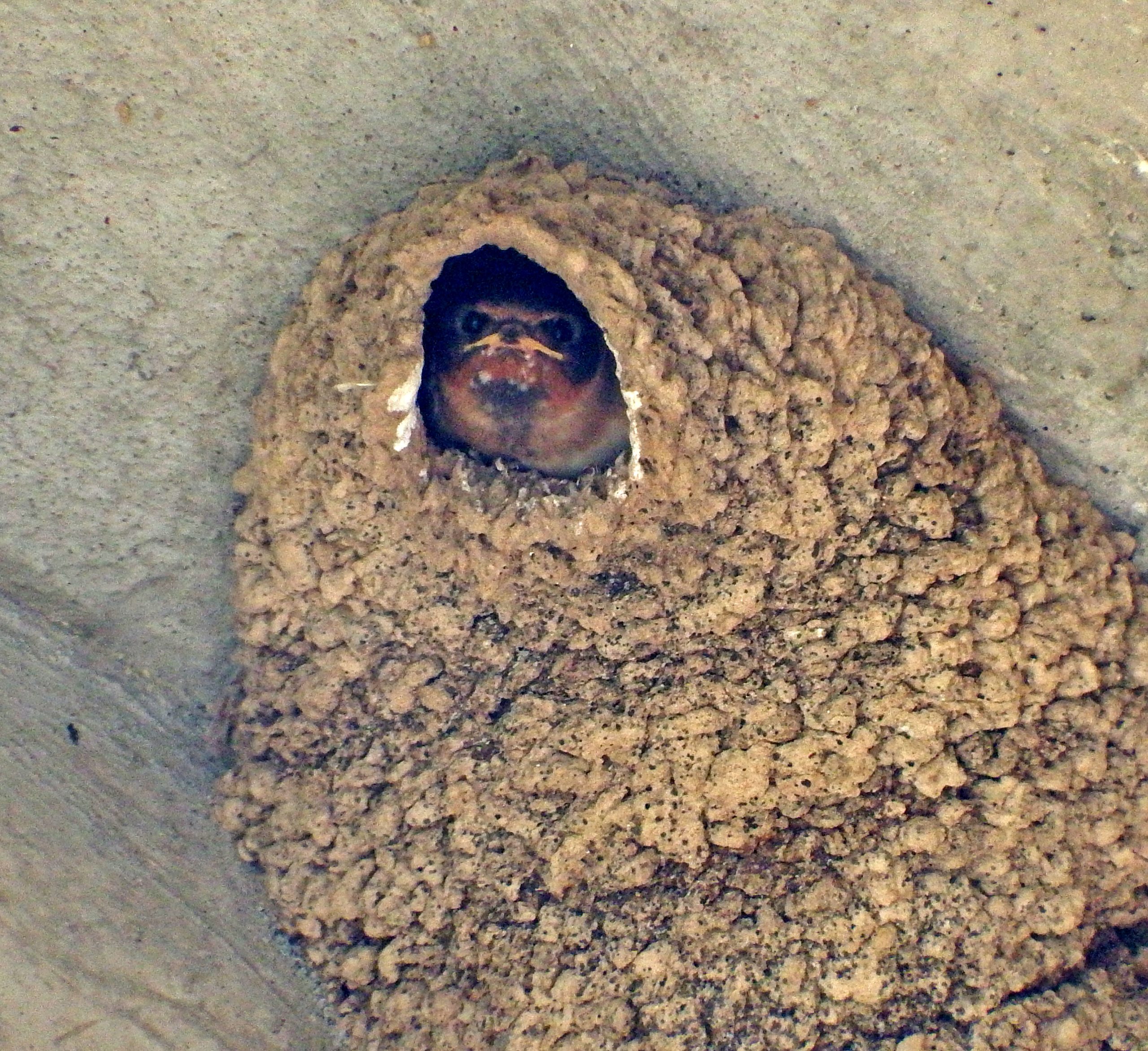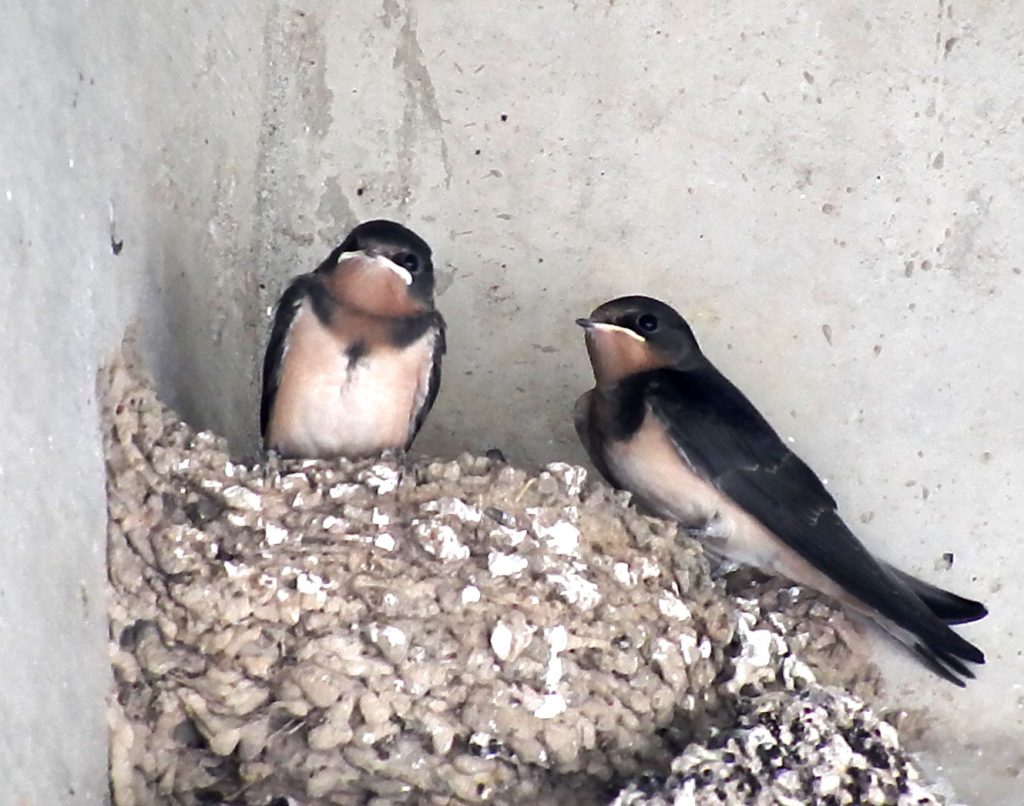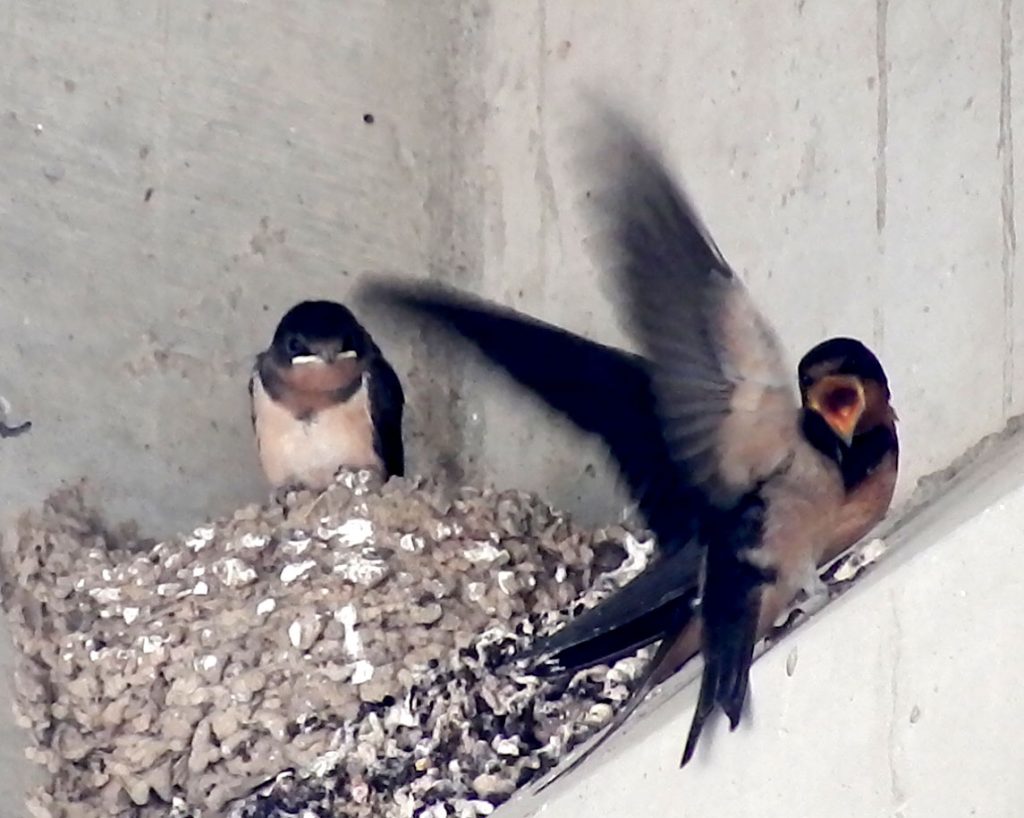Of bird lips and baby hawks

We are deep into baby bird season.
Many species who live in the Park year round are raising chicks right here, but most of our egrets and herons are missing. These species roost in large colonies; while adults might spend all year hunting in the Park, when it comes time to raise chicks, they leave for communal roosts. Once those chicks can fly, you will see egrets and herons back in the Park.
A few species come to the Park specifically to raise their young. Chief among those would be the cliff swallows that I have written about here, here, and here and the barn swallows, who have conveniently joined the cliff swallows under Studemont bridge (just east of the dog park).
It is not unusual to find barn swallows and cliff swallows nesting near one another. Both make mud nests and need both mud and a surface on which to attach the nest. Also, both feed on flying insects, many of which congregate over water. Because of these similar and particular needs, you often find cliff swallows and barn swallows nesting under bridges.
While the cliff swallows make gourd-like nests with tiny openings, the barn swallows make mud cups lined with grasses and small fluff. This makes their chicks much easier to see. And that means you get a great look at that rarest of commodities: bird lips.

Cliff swallow chick in the nest. You can tell it’s a chick by those yellow lips.
Okay. Birds don’t have true lips. Lips evolved so babies who nurse (mammals) could latch on to mom and get a good seal. No nursing, no lips. What birds have are gape flanges. But they look just like lips. They are prominent only in baby birds, and they do function kind of like lips.

Barn swallows in cup-like nest. Notice those lips!
A baby human has a rooting instinct that causes her to turn towards a caress, seeking a nipple. The lips latch onto the nipple. This stimulation causes the mother to release milk. When hungry, baby birds open their mouths as wide as they can. This exposes a colorful inner mouth (called a gape) surrounded by those bright “lips.” This configuration of colors and shapes causes the mother bird to put food into the baby’s mouth.

Barn swallow chick gaping and it looks like that food is on the way.
There are many studies showing that birds can recognize their own offspring by gape coloring, including clues visible only in the ultra-violet spectrum. Studies also suggest that baby birds advertise their fitness through their gape coloring and parents use this information to give extra food to the healthiest chicks.
Baby birds who cannot fly are basically just snacks in the waiting. That is why as a group, birds spend the most energy at first in growing feathers. Once the bird can fly, it is much less likely to be eaten. That results in huge numbers of seemingly adult birds (feathers, flying, etc.) fluttering their wings madly begging for food. They can fly, but their brains are still undeveloped and they cannot feed themselves. When you see one of those fluttering begging babies, take a look at the beak. You can usually still see a trace of bird lips!
In this video of barn swallows gape and beg for food from every adult that flies by.
Of course, the best baby bird in the Park is our red-shouldered hawk chick. Last week, I didn’t get any interesting footage, but this week made up for it. I think we have just the one chick, but he or she is cute as a button and has a very healthy appetite.

